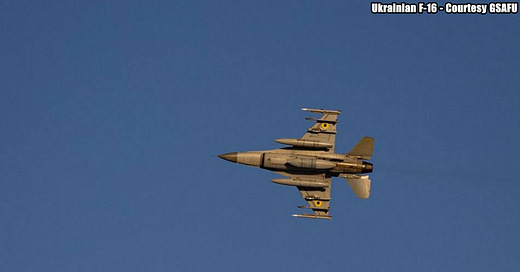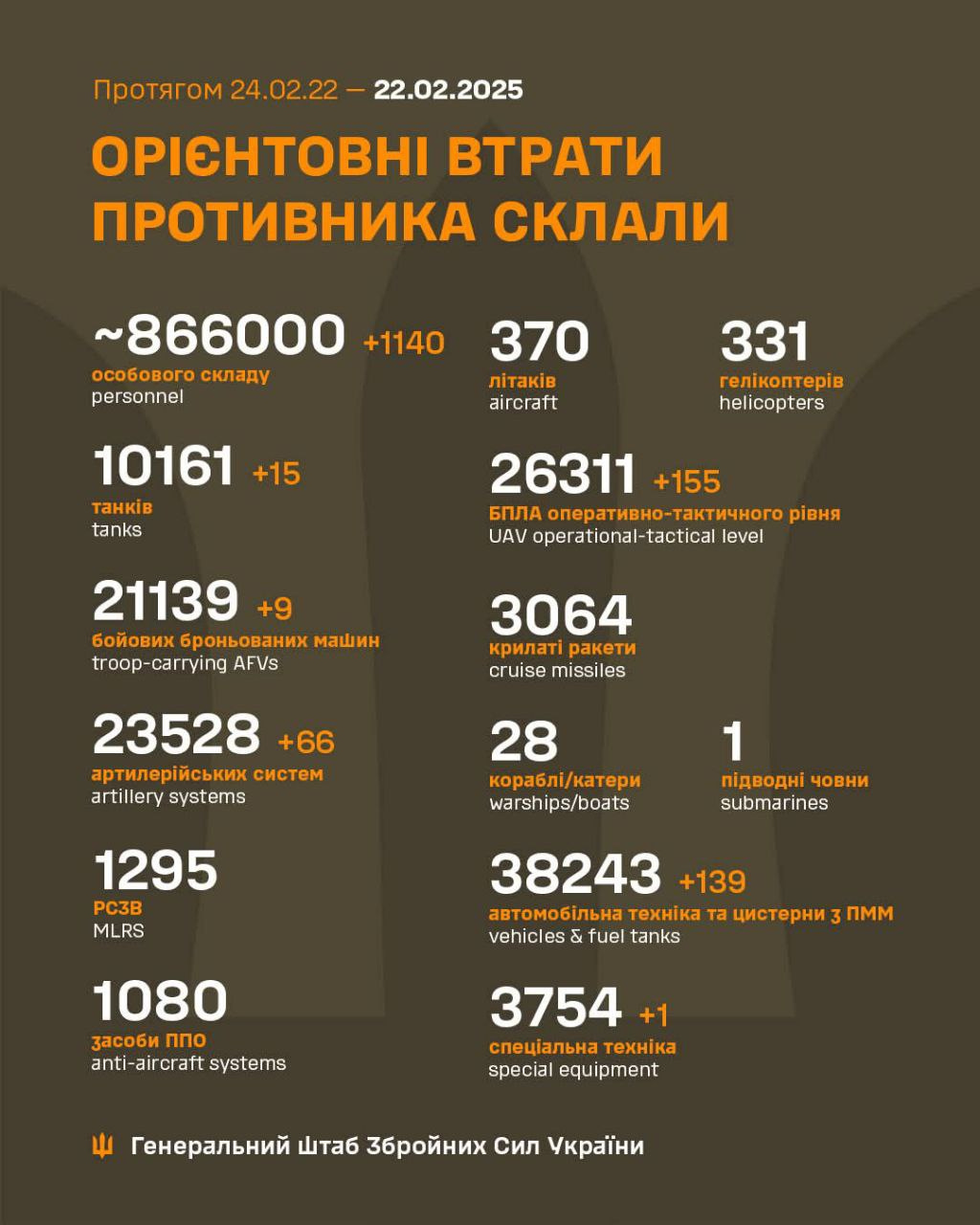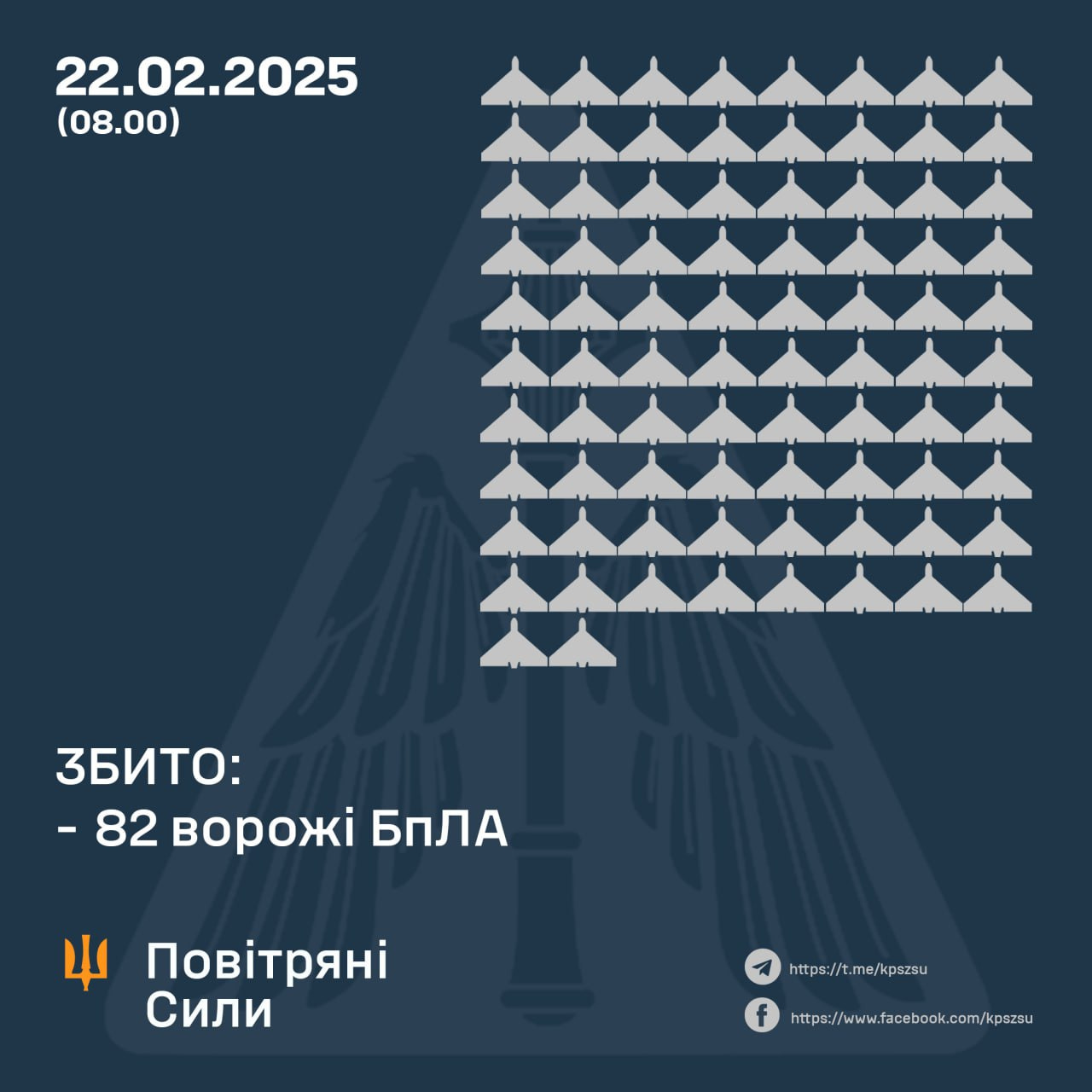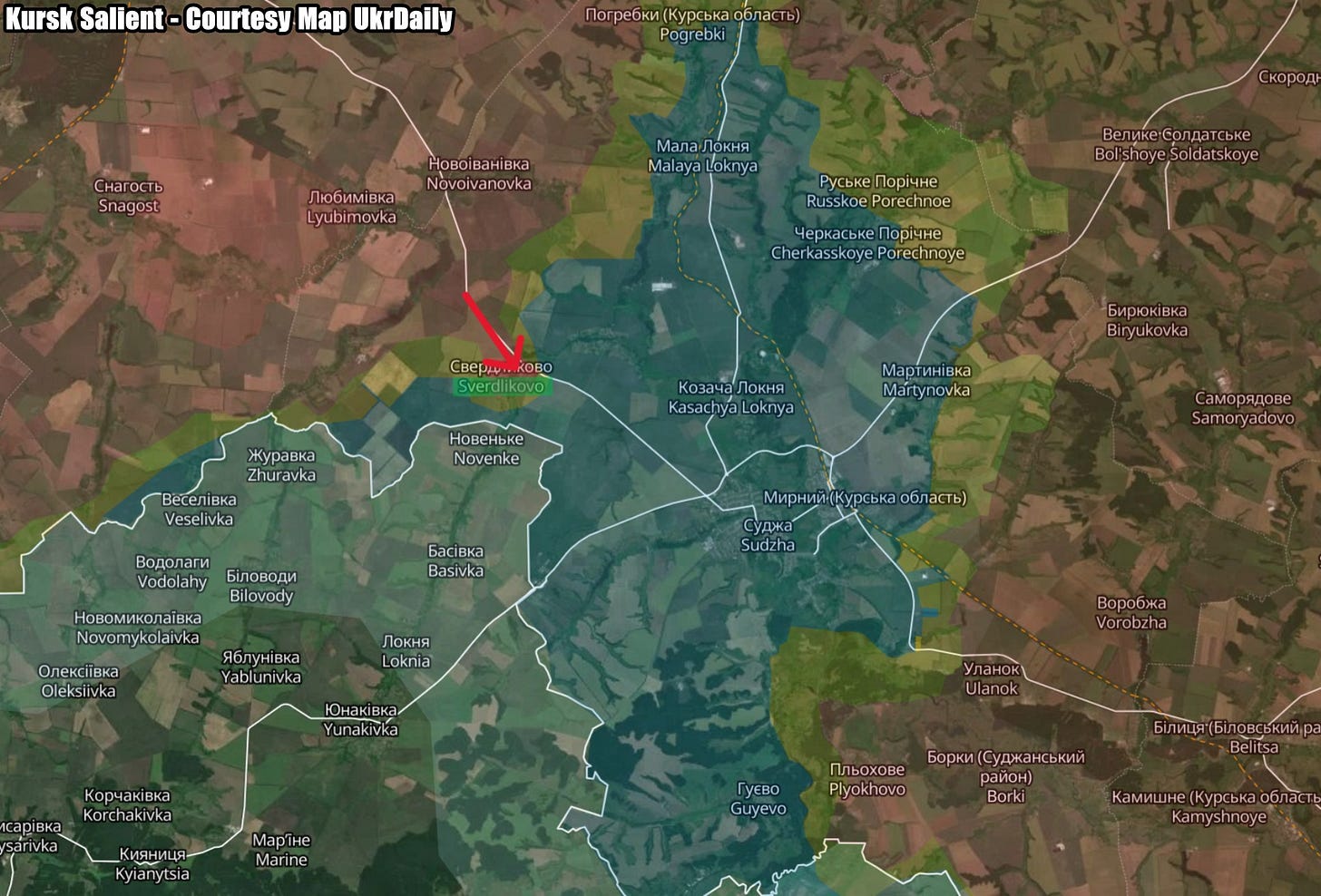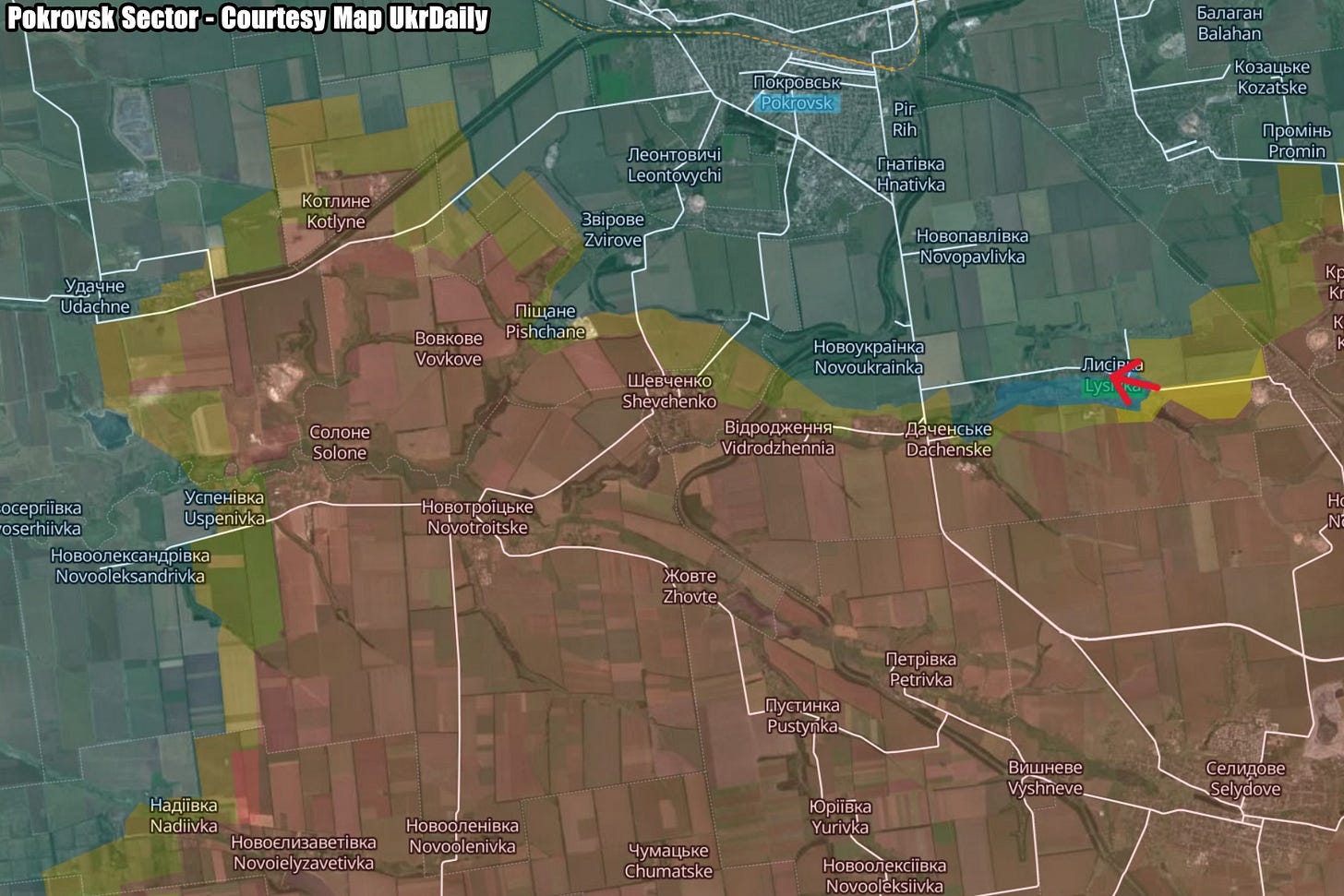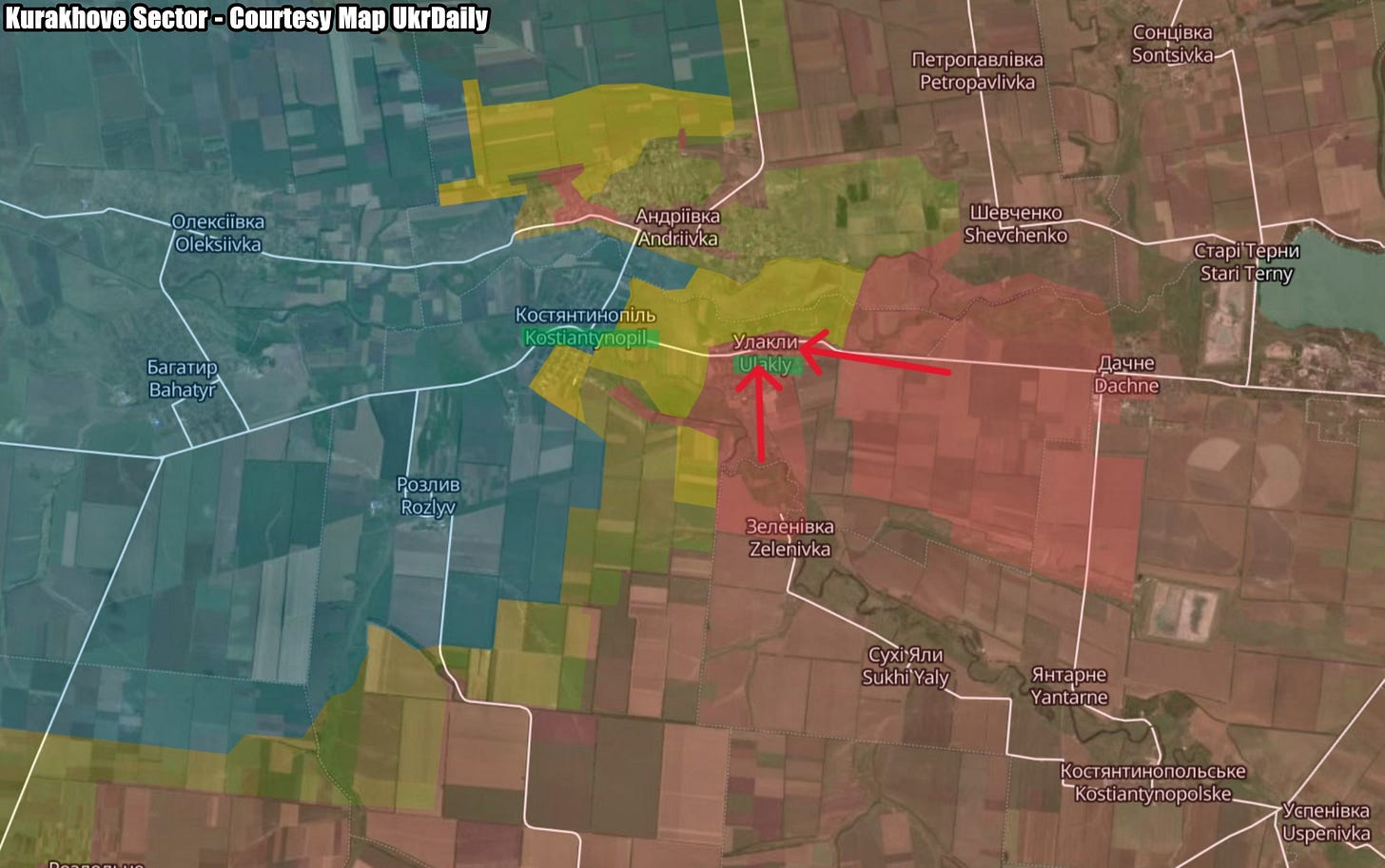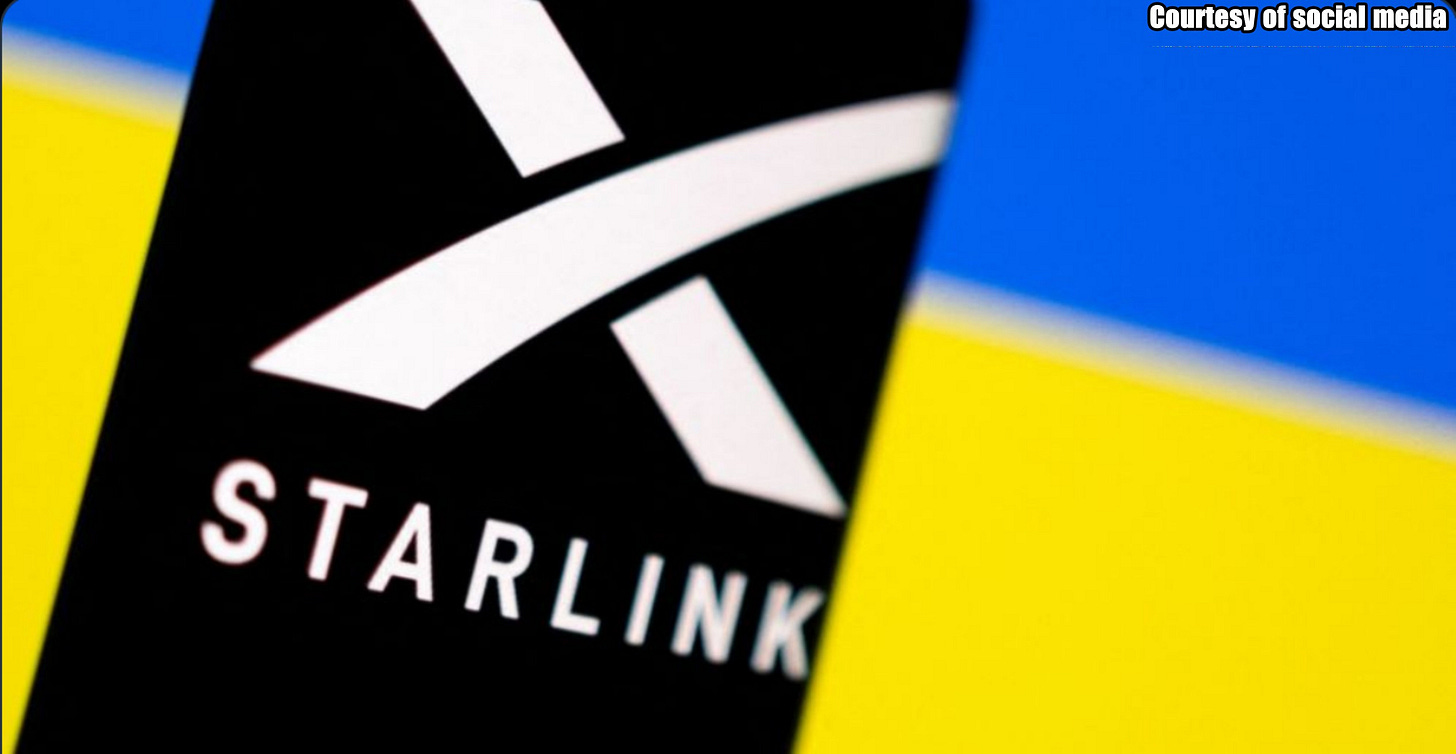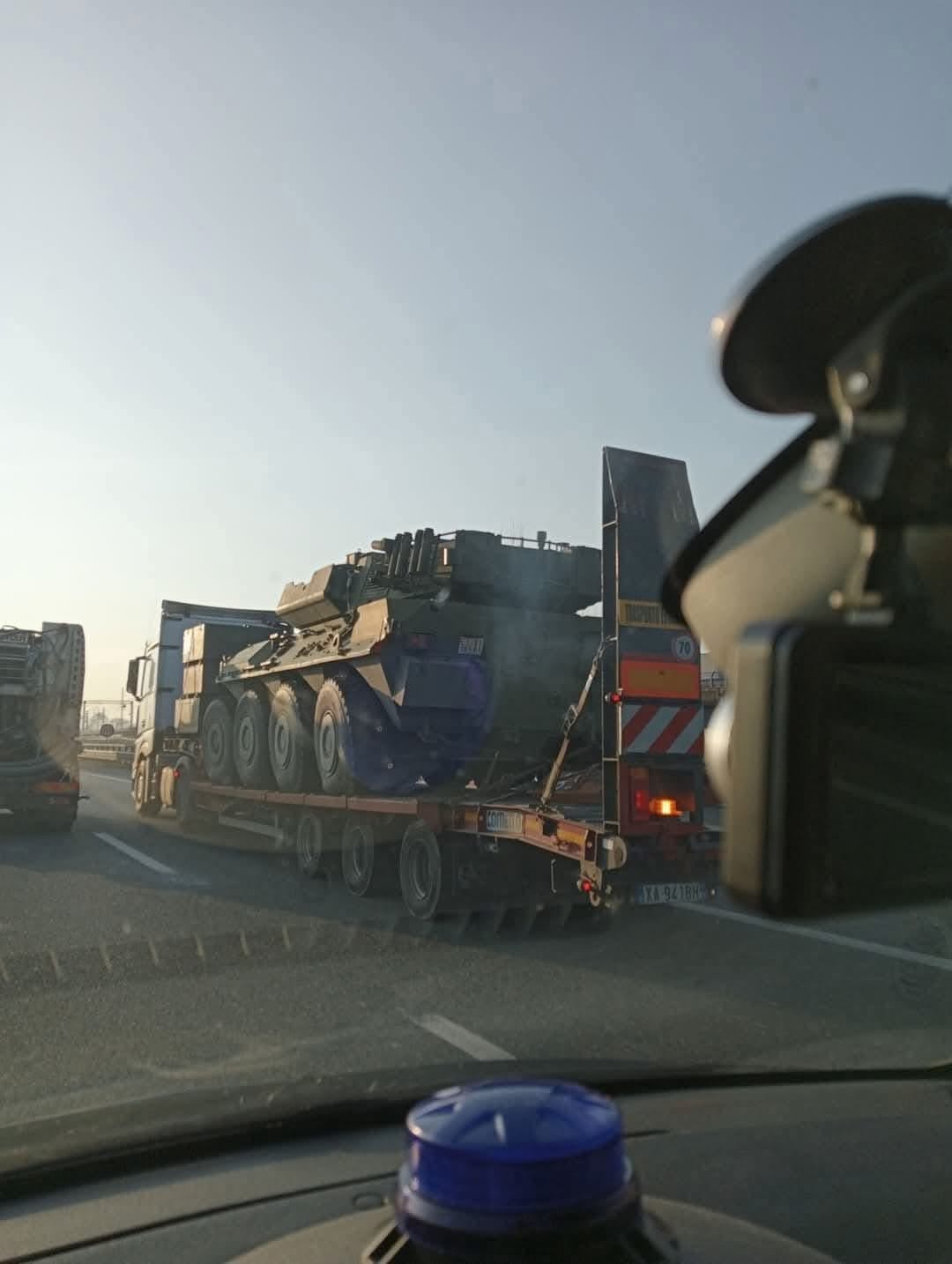Slava Ukraini! In early 2022 I began a Telegram channel aggregating news from a number of sources daily on the war in Ukraine. In June 2023 I began providing a daily draft for the Ukraine War Brief Podcast collecting news from over 70 sources daily, which formed the basis of the script. While the Podcast no longer exists I have continued to make this Brief available for my followers here on Substack for those who wish to keep up with the news from the war.
All the latest news on the Russo-Ukraine War 6 days per week
ALONG THE CONTACT LINE
GSAFU Morning Report
The General Staff of the Armed Forces of Ukraine in its Operational Information update at 08:00 on Feb 22 stated that day 1095 of the full-scale invasion of the Russian Federation against Ukraine had begun.
The situation on the line of combat remains tense in some sectors. Ukrainian defenders continue to actively counteract the Russian aggressor, causing them significant losses in personnel, equipment and technology. Exhausting the enemy along the entire front line and continuing to disrupt the plans of Russian occupiers to advance deeper into the territory of Ukraine.
During the past day, 90 combat engagements took place.
Over the past 24 hours, the enemy carried out 1 missile strike, 72 air strikes, used 3,050 drones and fired approximately 5,000 artillery shells across the positions of Ukrainian forces and civilians.
Air Force Daily Report
82 ENEMY UAVS SHOT DOWN, 75 DRONES FAILED TO REACH THEIR TARGETS (LOCATIONALLY LOST)
➖➖➖➖➖➖➖➖➖
On the night of Feb 22, 2025 (from 19.00 Feb 21) the opponent attacked 162 Shahed attack UAVs and simulator drones of different types from the directions: Orel, Bryansk, Kursk, Millerovo, Primorsko-Akhtarsk - Russia.
The air attack was repelled by the aviation, anti-aircraft missile troops, anti-aircraft missile troops, electronic warfare units and mobile fire groups of the Air Force and Defense Forces of Ukraine.
As of 08.00 it has been confirmed that 82s Shahed UAVs and drones of other types were shot down in Kharkiv, Poltava, Sumy, Kyiv, Chernihiv, Cherkasy, Kirovohrad, Zhytomyr, Vinnytsia, Mykolaiv, Kherson, Zaporizhia and Dnipropetrovsk regions.
75 enemy simulator drones were lost in location (with no adverse consequences).
As a result of the enemy attack, the Kyiv , Kharkiv, Kirovohrad region and Dnipropetrovsk regions suffered.
Combat Operations in the Kursk Sector, Russian Federation
The Institute for the Study of War (ISW), a US based think tank, in its Feb 21 Russian Offensive Campaign Assessment reported that Russian forces recently advanced in Kursk Oblast. Russian forces continued attacking northwest of Sudzha near Pogrebki, Lebedevka, Nikolskiy, Nikolayevo-Darino, and Sverdlikovo and south of Sudzha near Guyevo on Feb 21. A Russian source claimed that Ukrainian forces counterattacked near Sverdlikovo and Guyevo.
Geolocated footage published on February 21 indicates that Russian forces advanced in southern Sverdlikovo.
The Khortytsia operational-strategic group
(Responsible for the northeastern part of Ukraine. )
There have been no major changes to the combat environment since our last report.
The Tavria operational-strategic group
(Responsible for the central-eastern and southeastern part of Ukraine.)
Pokrovsk Sector : Russian forces recently advanced near Pokrovsk. Russian forces continued attacks near Pokrovsk itself; east of Pokrovsk near Vodyane Druhe, Yelyzavetivka, Svyrydonivka, and Promin; southeast of Pokrovsk near Lysivka; south of Pokrovsk near Pishchane; and southwest of Pokrovsk near Udache, Serhiivka, Nadiivka, Preobrazhenka, Bohdanivka, and Sribne on Feb 20 and 21. A Russian milblogger claimed that Ukrainian forces counterattacked near Zaporizhzhia and Preobrazhenka (both southwest of Pokrovsk).
Assessed Russian advances: Geolocated footage published on Feb 21 indicates that Russian forces recently advanced in central Lysivka (southeast of Pokrovsk).
Ukrainian Khortytsia Group of Forces Spokesperson Major Viktor Trehubov stated on Feb 21 that Russian forces are struggling to advance near Pokrovsk and will likely have to transfer additional units to this area and reconstitute units already in the area to make further gains in this direction. The spokesperson of a Ukrainian brigade operating in the Pokrovsk and Kurakhove directions stated that Russian forces are using tanks and infantry fighting vehicles in the area and are often attacking in single columns with little space between vehicles. The spokesperson noted that this method of attack makes the Russian tanks and armored vehicles more vulnerable to Ukrainian drone strikes.
Kurakhove Sector: Russian forces recently eliminated the Ukrainian pocket west of Kurakhove amid continued reports that the Russian military is redeploying elements of the Russian Southern Military District's (SMD) 8th Combined Arms Army (CAA) from the Kurakhove direction to the Toretsk direction.
Geolocated footage published on Feb 21 indicates that Russian forces – reportedly elements of the 39th Motorized Rifle Brigade (68th Army Corps [AC], Eastern Military District [EMD]) – seized Ulakly (west of Kurakhove) and likely closed the Ukrainian pocket west of Kurakhove. A Russian milblogger claimed that Russian forces advanced within central Kostyantynopil (west of Kurakhove) from the south. Russian forces continued attacking west of Kurakhove near Andriivka, Ulakly, and Kostyantynopil on Feb 20 and 21 as part of ongoing efforts to leverage the seizure of Kurakhove and Dachne (west of Kurakhove) to level the frontline west of the settlements.
ISW previously assessed that Russian forces' main objective in the Kurakhove direction was to level the frontline and create more defensible positions west of Kurakhove and that Russian forces would not redeploy forces from the Kurakhove direction until Russian forces achieved their objectives in the area. Russian forces appear close to leveling the frontline in western Donetsk Oblast and are reportedly working to redeploy elements of two formations from this area.
The Odesa operational-strategic group
(Responsible for Kherson, Qırım, (also known as Crimea) and the Black Sea.)
There have been no major changes to the combat environment since our last report.
TEMPORARILY OCCUPIED TERRITORIES
Nothing major to report.
THE HOME FRONT
Rescuers find new smoldering fire at Chornobyl nine days after Russian drone strike.
Nine days after a Russian drone hit the containment structure above Chornobyl's fourth reactor, rescuers opened the shelter to extinguish smoldering embers, Ukraine's State Emergency Service reported on Feb. 22. A smoldering fire was detected on the northern side of the arch, New Voice reported citing authorities.
"Continuous monitoring is being conducted using UAVs with thermal imaging cameras and handheld thermal imagers. Radiation levels at the Chornobyl nuclear plant site remain within normal limits, posing no threat to the public," the State Emergency Service reported.
The IAEA confirmed explosions at the site but did not mention Russia. Ukraine’s State Agency for Nuclear Safety and Environmental Protection reported damage to the New Safe Confinement and other equipment.
President Volodymyr Zelenskyy said the drone specifically targeted the sarcophagus, flying at an altitude of 85 meters — beyond the reach of air defense radars.
The State Emergency Service repeatedly stated that radiation levels remained normal after the attack, though the fire was difficult to extinguish.
As of Feb. 17, responders were battling three smoldering spots on the containment unit. By Feb. 20, drones with thermal imaging cameras were being used to monitor the situation and detect potential flare-ups.
RUSSIAN WORLD
Ukraine attacks Russian oil pumping station in Krasnodar Krai.
Drones operated by Ukraine’s Security Service (SBU) struck a substation powering the Novovelychkovskaya oil pumping station in Russia’s Krasnodar Krai on Feb. 20, effectively disrupting its operations, the Kyiv Independent reports citing a security source.
According to the source, the station is one of the "key facilities for transporting oil in the Kuban region, supplying the Afipsky and Ilysky oil refineries." Russian authorities are currently assessing the damage, the source said.
On Feb. 20, several local Russian media outlets and Telegram channels reported explosions in the Krasnodar Krai region, claiming Russian air defense repelled the drone attack and there was no fire.
"This is the eighth successful SBU special operation since the beginning of the year targeting Russia's oil refining and pumping facilities. Each such explosion results in multimillion-dollar losses for Russia and complicates the provision of fuel to the Russian army," the source said.
Ukraine routinely launches deep strikes against military and industrial facilities in Russia, primarily relying on domestically developed drones. Kyiv has particularly taken aim at Russia's fossil fuel infrastructure as part of its strategy to undermine funding for the Kremlin's war chest.
INTERNATIONAL NEWS
US Threatens to cut Ukraine's access to Starlink internet services to force minerals deal.
U.S. negotiators pressing Kyiv for access to Ukraine's critical minerals have raised the possibility of cutting the country's access to Elon Musk's vital Starlink satellite internet system, Reuters reported citing three sources familiar with the matter.
Ukraine's continued access to SpaceX-owned Starlink was brought up in discussions between U.S. and Ukrainian officials after Ukrainian President Volodymyr Zelenskyy turned down an initial proposal from U.S. Treasury Secretary Scott Bessent, the sources said.
Starlink provides crucial internet connectivity to war-torn Ukraine and its military.
The issue was raised again on Thursday during meetings between Keith Kellogg, the U.S. special Ukraine envoy, and Zelenskyy, said one of the sources, who was briefed on the talks.
During the meeting, Ukraine was told it faced imminent shutoff of the service if it did not reach a deal on critical minerals, said the source, who requested anonymity to discuss closed negotiations.
"Ukraine runs on Starlink. They consider it their North Star," said the source. "Losing Starlink ... would be a massive blow."
Zelenskyy has rejected demands from President Donald Trump's administration for $500 billion in mineral wealth from Ukraine to repay Washington for wartime aid, saying the U.S. has offered no specific security guarantees.
On Friday, the Ukrainian president said the U.S. and Ukrainian teams were working on an agreement and Trump said he expects a deal will be signed soon.
Musk rushed thousands of Starlink terminals to Ukraine to replace communications services destroyed by Russia after its February 2022 invasion. Hailed as a hero in Ukraine, Musk later curtailed access at least once before in the fall of 2022 as he became more critical of Kyiv's handling of the war.
U.S. lawmakers are divided over Trump's efforts to find a quick end to the Ukraine war and some have raised questions about Musk's rapid-fire efforts to cull thousands of federal workers and shut down Federal agencies.
Melinda Haring, a senior fellow with the Atlantic Council, said Starlink was essential for Ukraine’s operation of drones, a key pillar of its military strategy.
“Losing Starlink would be a game changer,” Haring said, noting that Ukraine was now at 1:1 parity with Russia in terms of drone usage and artillery shells. Ukraine has a wide range of different drone capabilities, ranging from sea drones and surveillance drones to long-range unmanned aerial vehicles.
The Ukrainian embassy in Washington, the White House and the U.S. Department of Defense did not immediately respond to a request for comment.
SpaceX, which operates Starlink, also did not immediately respond to a request for comment.
Last fall, Ukraine floated the idea of opening its critical minerals to investment by allies. This was part of a "victory plan" that sought to put it in the strongest position for talks and force Moscow to the table.
Trump has embraced the idea, saying he wants Ukraine to supply the U.S. with rare earths and other minerals in return for financially supporting its war effort.
Zelenskyy rejected a detailed U.S. proposal last week that would have seen Washington and U.S. firms receiving 50% of Ukraine's critical minerals, which include graphite, uranium, titanium and lithium, a key component in electric car batteries.
Since then a rift has emerged between the leaders, with Trump denouncing Zelenskyy as "a dictator without elections" on Wednesday after Zelenskyy said Trump was trapped in a Russian disinformation bubble, a response to the U.S. president suggesting Ukraine started the war.
Zelenskyy not ready to sign 'problematic' Ukraine minerals deal with US.
Volodymyr Zelenskyy is not ready to accept a minerals deal with the US as Ukraine sees a "number of problematic issues" with the draft agreement, Sky News reported citing a Ukrainian source.
Donald Trump had said a deal was close, but a source with knowledge of the negotiations told Sky News the Ukrainian president is not ready to sign.
The US leader has sought an agreement from Ukraine for access to the country's natural resources in exchange for weapons.
The Ukrainian source said: "The agreement is not yet ready to be signed, there are a number of problematic issues, and in the current form of the draft, the president is not ready to accept it.
"Today, the drafts do not reflect a partnership in the agreement and contain only unilateral commitments by Ukraine."
On the US side, US national security adviser Mike Waltz said this week that a deal was going to be done.
"Here's the bottom line, President Zelenskyy is going to sign that deal, and you will see that in the very short term," Mr Waltz told the Conservative Political Action Conference in Maryland on Friday.
It is also believed that US negotiators raised the possibility of cutting Ukraine's access to Elon Musk's vital Starlink satellite internet system if it did not agree to a deal.
Earlier, Mr Trump called French President Emmanuel Macron a "friend of mine" and UK leader Sir Keir Starmer a "nice guy" but said Russia had only agreed to negotiate "because of me".
Mr Trump made the comments days before both leaders visit the White House for a meeting in which they must try to press Ukraine's case while keeping the US leader onside.
WSJ - US and Ukraine set to sign mineral resources agreement as early as today.
The United States and Ukraine are close to finalizing a deal on mineral extraction that could be signed as soon as Feb. 22, the Wall Street Journal reported, citing sources.
Ukraine had refused to sign such a deal earlier this week, sparking a war of words between President Trump and Ukrainian President Volodymyr Zelensky and fears of a break in relations between Washington and Kyiv.
In an apparent nod to an impending deal, Zelenskyy said in a nightly video address Friday that teams of U.S. and Ukrainian negotiators were working on a draft agreement.
“This is an agreement that can strengthen our relations, and the key is to work out the details to ensure its effectiveness,” he said. “I look forward to the outcome—a just result.”
Zelenskyy was presented with a deal by U.S.Treasury Secretary Scott Bessent in Kyiv last week, but refused to sign, saying the Ukrainian side needed to study it further and that a deal should contain some form of security guarantees for Ukraine. Ukrainian officials said that they had only a few hours to study it before it was presented to them.
An agreement could be signed as soon as Saturday, although it isn’t yet complete, people briefed on the talks said. The exact terms couldn’t be learned.
Zelensky’s initial rejection of the deal proposed by Bessent had prompted escalating broadsides from Trump against the Ukrainian president. Trump called Zelensky a dictator after Zelensky suggested Trump was living in a bubble of Russian disinformation.
A person close to the government in Kyiv said Kellogg played “a big part” in finalizing terms of the deal by building trust with Zelensky and other Ukrainian officials over a three-day visit to the country’s capital.
Trump’s national security adviser, Mike Waltz, this week had called the proposed deal “an economic partnership” and “a historic opportunity to have the United States of America co-invest with Ukraine, invest in its economy, invest in its natural resources.”
Ukraine has Europe’s largest reserves of titanium, which is used to make alloys for aircraft and naval vessels, and lithium, a key material in batteries.
It also has deposits of rare earths, essential in certain high-tech industries, including defense and renewable energy. While potentially plentiful, the reserves would require massive investment to develop, even in peacetime, and many are located in areas occupied by Russia.
The minerals are also especially valuable to the U.S. because of heightened tensions with China and Russia, whose land masses now control a large portion of them.
MILITARY & TECH
Italy reportedly sending B1 Centauros to Ukraine.
An Italian defense analyst has reported that multiple B1 Centauro wheeled tank destroyers are being sent to Ukraine.
While the exact number remains undisclosed, this development suggests a potential expansion of Western military aid to Kyiv.
“After having confirmed a few details, Im happy I can share this photo which shows one the many Italian B1 Centauro’s on it’s way to Ukraine,” he posted on X.
Italy currently operates a fleet of 259 B1 Centauro vehicles, after previously decommissioning 141 units that were transferred to Jordan.
The Centauro, developed by the Italian consortium Iveco-Oto Melara, is an 8×8 wheeled tank destroyer armed with a 105mm rifled gun. Designed for rapid deployment, it offers high mobility, making it suitable for reconnaissance and support roles in diverse battlefield conditions.
The possible transfer of the B1 Centauro to Ukraine aligns with continued European country efforts to provide Kyiv with armored capabilities as the war persists.
As of now, there has been no official confirmation from the Italian government regarding the reported transfer.
That’s it for today’s Brief folks if you would like to keep up with events in Ukraine daily please consider subscribing, it’s free!


